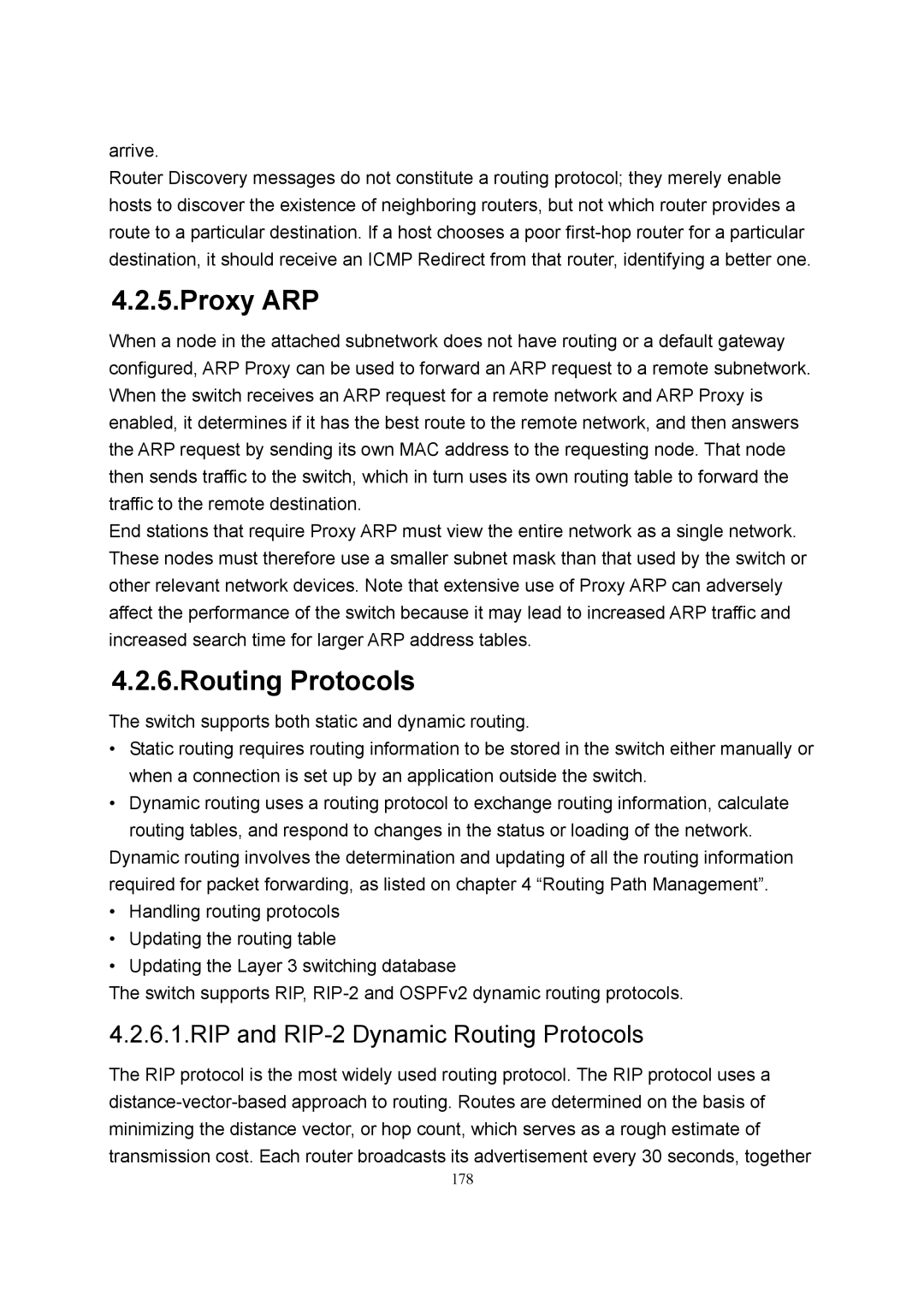arrive.
Router Discovery messages do not constitute a routing protocol; they merely enable hosts to discover the existence of neighboring routers, but not which router provides a route to a particular destination. If a host chooses a poor
4.2.5.Proxy ARP
When a node in the attached subnetwork does not have routing or a default gateway configured, ARP Proxy can be used to forward an ARP request to a remote subnetwork. When the switch receives an ARP request for a remote network and ARP Proxy is enabled, it determines if it has the best route to the remote network, and then answers the ARP request by sending its own MAC address to the requesting node. That node then sends traffic to the switch, which in turn uses its own routing table to forward the traffic to the remote destination.
End stations that require Proxy ARP must view the entire network as a single network. These nodes must therefore use a smaller subnet mask than that used by the switch or other relevant network devices. Note that extensive use of Proxy ARP can adversely affect the performance of the switch because it may lead to increased ARP traffic and increased search time for larger ARP address tables.
4.2.6.Routing Protocols
The switch supports both static and dynamic routing.
•Static routing requires routing information to be stored in the switch either manually or when a connection is set up by an application outside the switch.
•Dynamic routing uses a routing protocol to exchange routing information, calculate routing tables, and respond to changes in the status or loading of the network.
Dynamic routing involves the determination and updating of all the routing information required for packet forwarding, as listed on chapter 4 “Routing Path Management”.
•Handling routing protocols
•Updating the routing table
•Updating the Layer 3 switching database
The switch supports RIP,
4.2.6.1.RIP and RIP-2 Dynamic Routing Protocols
The RIP protocol is the most widely used routing protocol. The RIP protocol uses a
178
